Mia and I spent most of this week on a camping/photography trip to Flaming Gorge, Utah and we had some wonderful photographic opportunities with pronghorns. We camped on an isolated peninsula and it happened that a buck pronghorn was using the topography of the peninsula to help him keep control of his very large harem of females. The herd consisted of the lone buck and many females – both adults and juveniles. The male was in full rut and frantic to keep his does together and prevent several other males from running off with them.
Does have varying mating strategies. Some does, called “sampling” females, will visit several males during the breeding season if allowed to do so. Others, referred to as “inciting females”, behave as sampling females until they come into estrus when they move off from the males which incites fights and aggressive competition between the males. These females always immediately mate with the winning male. Some females employ a third strategy where they join a single male and remain with him throughout estrus – these does are called “quiet” females.
Canon 7D, 1/800, f/5.6, ISO 640, 500 f/4, 1.4 tc
This poor buck was trying to control at least 28 females and was struggling mightily to do so. One evening we were at the bottom of a string of small hills just as the sun was setting (thus the warm, golden light in these photos). The buck and his females were strung out on the crest of several of the hills and one of the does was giving him a hard time by trying to escape the herd and join one of two other bucks that hung around the periphery of the harem. We saw this female bolt but so did the buck and he reacted instantly. Here he has just crested the hill into the light from the setting sun and is accelerating toward her.
Canon 7D, 1/1250, f/5.6, ISO 640, 500 f/4, 1.4 tc
Five frames later (firing at full burst rate of my 7D) he has gained amazing speed (pronghorns are the second fastest land mammal after the cheetah). In this shot I was delighted to get all four feet off the ground.
Canon 7D, 1/1600, f/5.6, ISO 640, 500 f/4, 1.4 tc
Three frames after that I caught this interesting foot/leg position.
Canon 7D, 1/1250, f/5.6, ISO 640, 500 f/4, 1.4 tc
In this image the escaping female is just below the buck and lower on the hill but out of the frame. He is attempting to get slightly ahead of her and then circle in front of her and turn her back to the herd- a maneuver I witnessed multiple times with this buck over a several days.
Canon 7D, 1/1250, f/5.6, ISO 640, 500 f/4, 1.4 tc
Sadly I lost sharp focus in this shot but I include it here so you can gain a little perspective on the situation and see the female he is attempting to control. Here she has apparently conceded defeat and slowed down and he is beginning to put the brakes on himself.
Canon 7D, 1/1600, f/5.6, ISO 640, 500 f/4, 1.4 tc
A few seconds later the female had returned to the herd and the buck stood at the top of the hill in the wonderful evening light, surveying his domain for several minutes as he rested.
This male had a hard time of it while we were there. He seldom rested. Most of his time was spent keeping wayward females from escaping, marking territory or running off the other two bucks. Occasionally he would snatch a bite or two as he patrolled his harem but he certainly couldn’t browse contentedly like the does did most of the time.
One mistake I made is that I never did get a shot of the whole herd from a distance away – didn’t think of it in my effort to get close to them. Next time I’ll know better. But this image does show the buck keeping a watchful eye on a few of his females on the top of one of the hills.
This shot should give you some perspective on the setting for these photos. The peninsula I refer to is the spit of land in the middle between the two arms of the lake. That peninsula ends at the water out of frame to the left. The hills that the pronghorn were on in these photographs are those on the left half of the peninsula that show some shade. My camping trailer is the small white speck slightly to the right of the middle of the photo. As you can imagine, our campsite was spectacular – extremely isolated, right on the water and we had a grand view as you’ll see in my last shot. Just perfect for us.
This was our view as we stepped out of my trailer. No question – this was a trip that will be repeated!
Ron


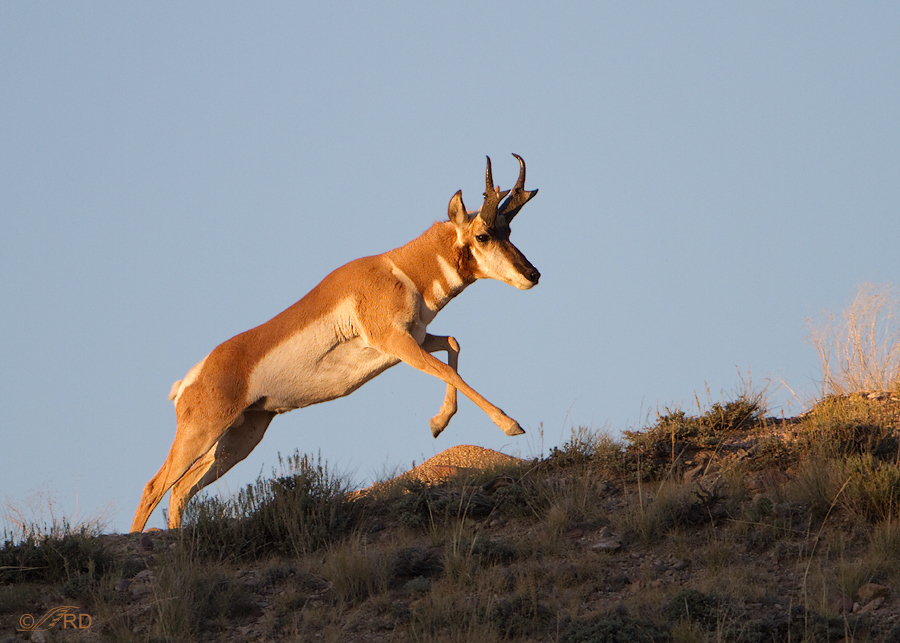
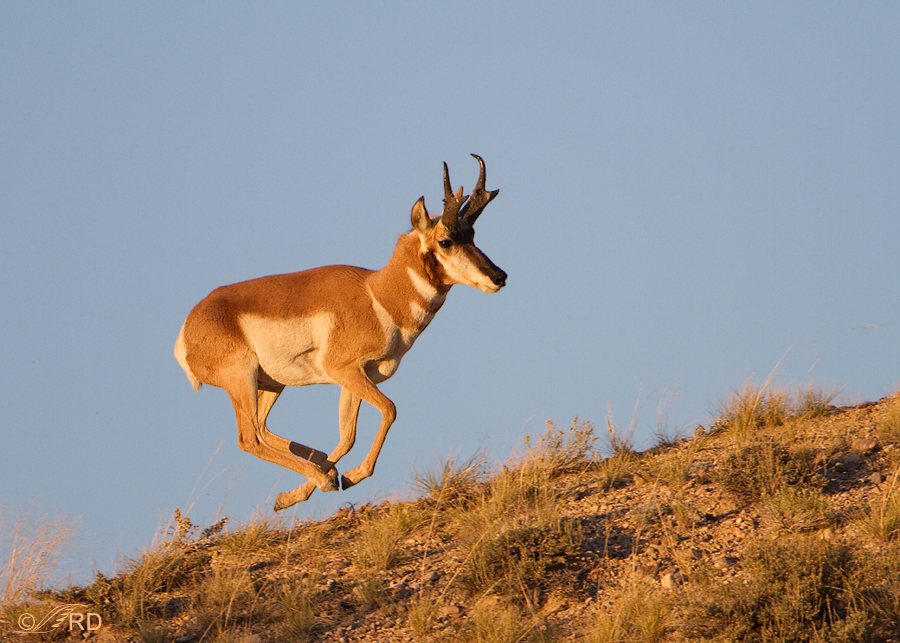
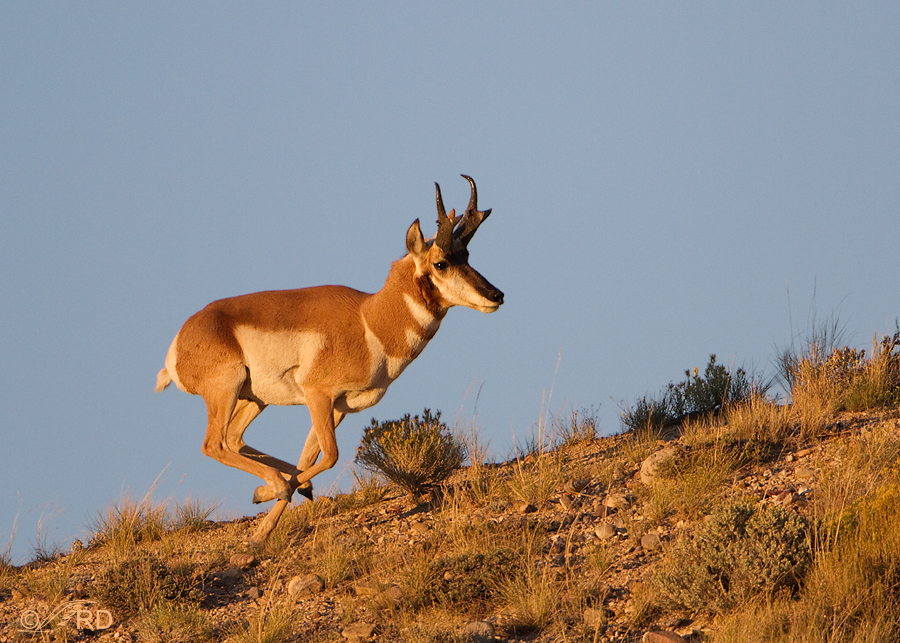
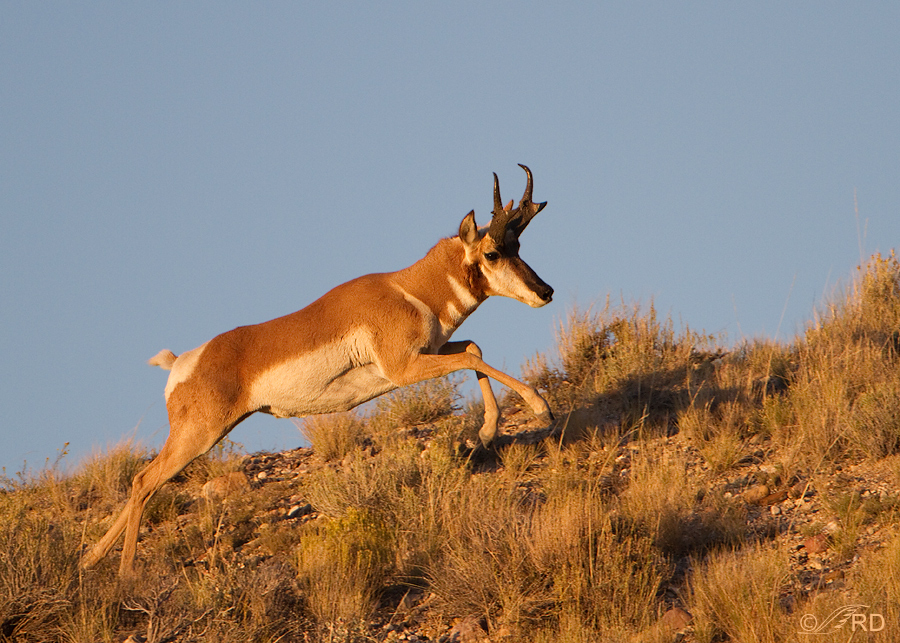
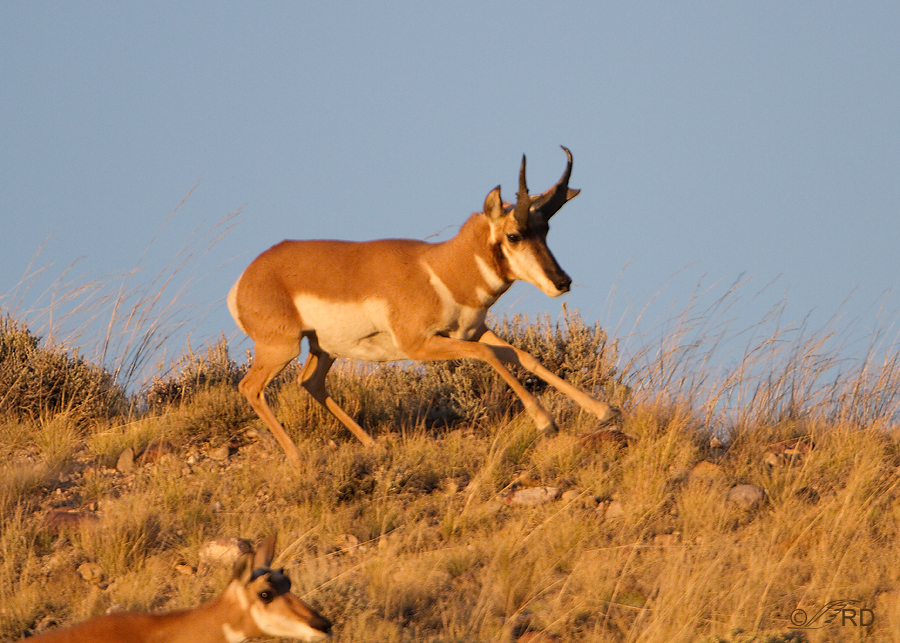

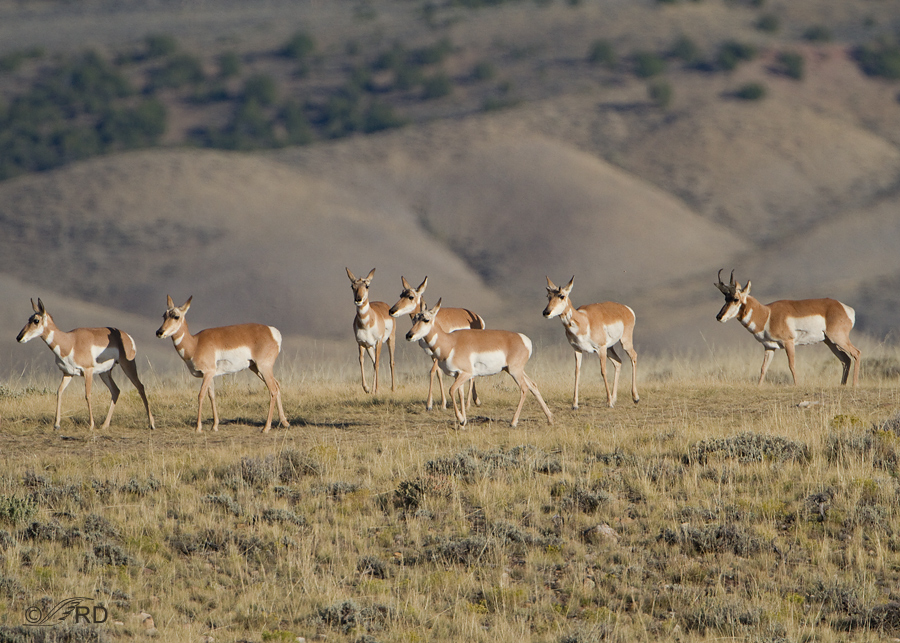
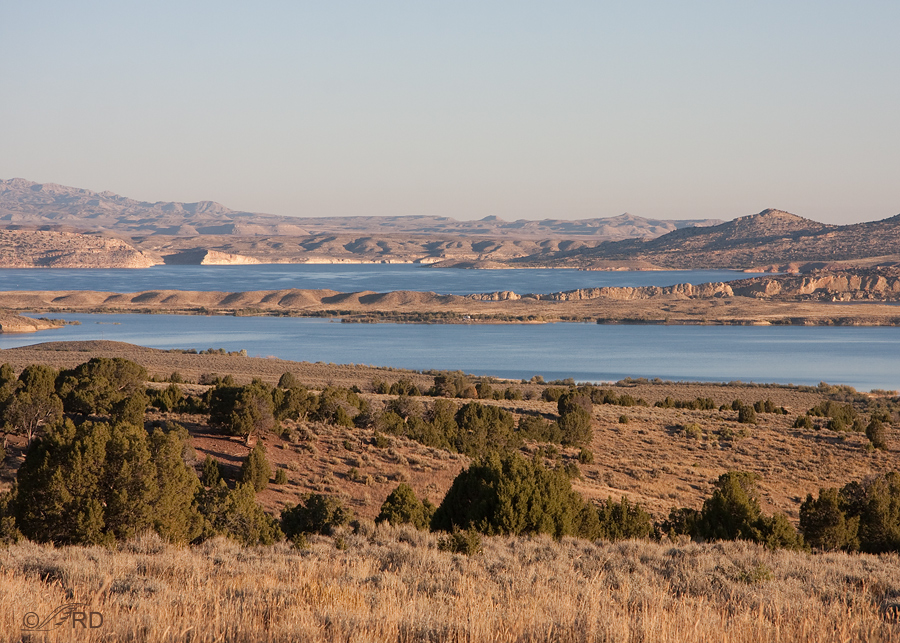

I have more sensitivity to the energetics of perpetuating a gene pool after reading this blog entry. Thanks for the reports on your wonderful camping trips and sharing the associated images.
Great photos, Ron. Keep ’em coming. Cheryl and I both really enjoy them.
How amazing. And what incredible shots – I loved the shot with all four feet off the ground, and also the one with his feet in a position which would have ensured calamity in my case (assuming of course that I had four feet). Thank you so much for sharing this.